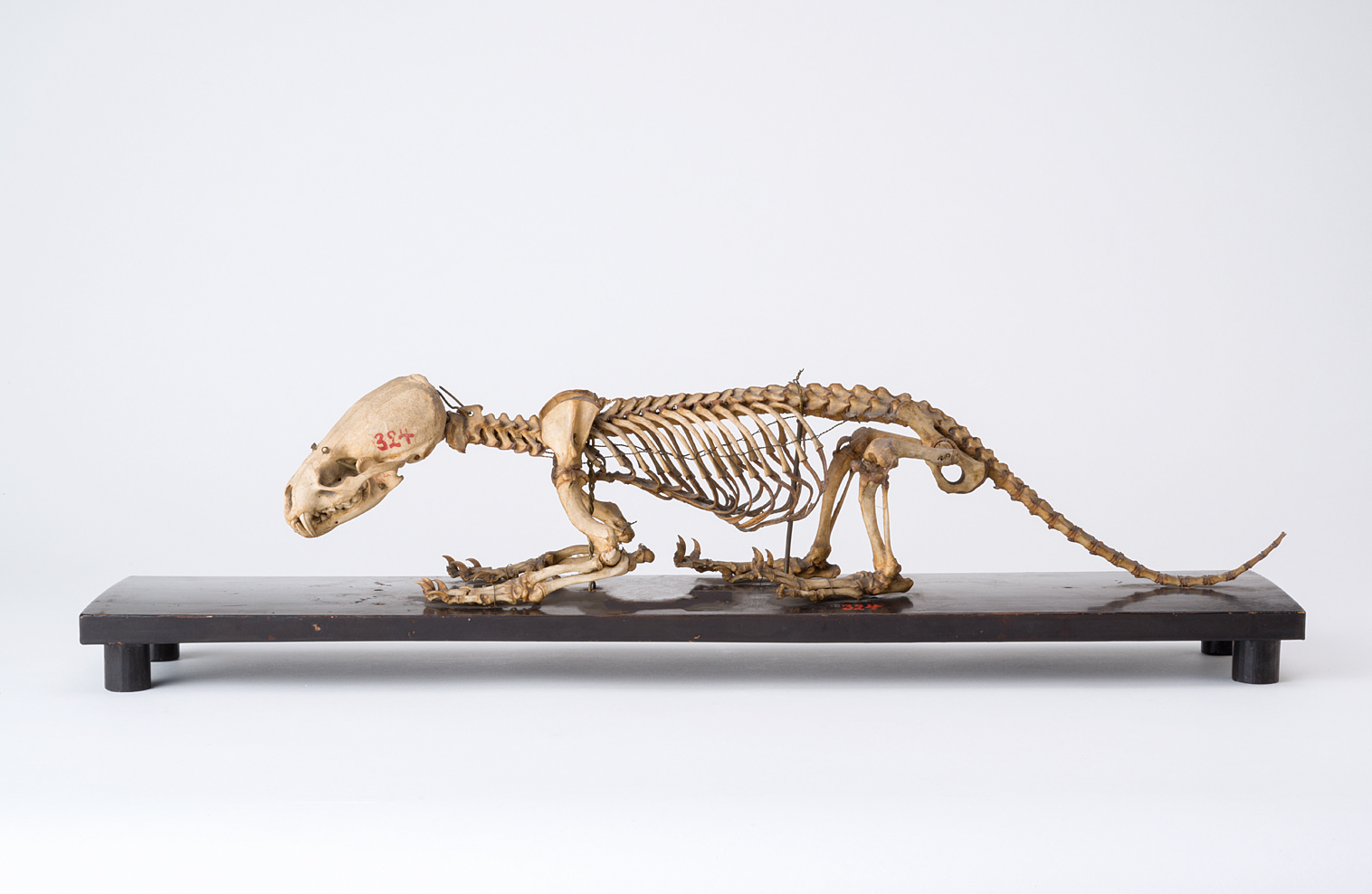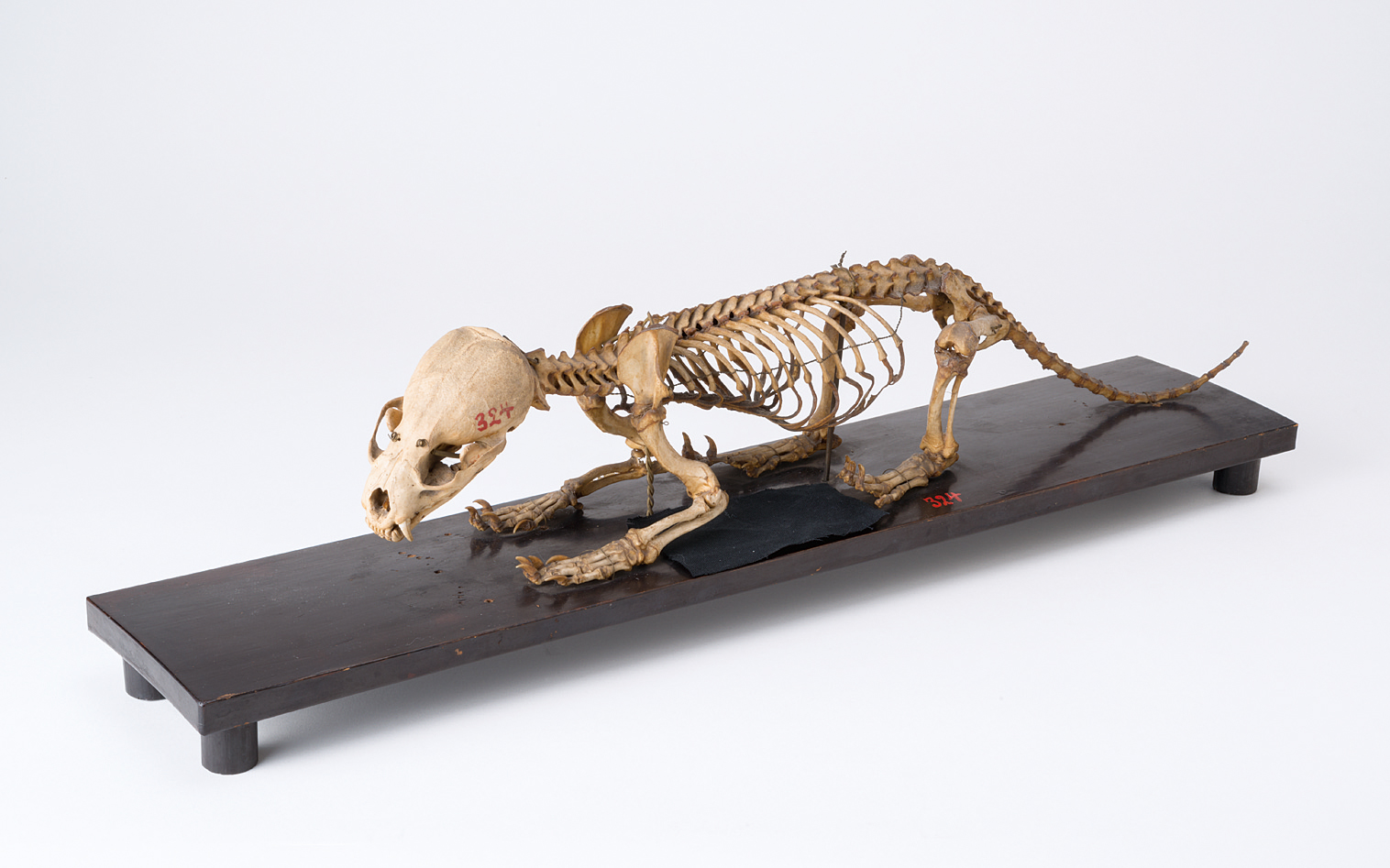B29
Skeleton of Eurasian otter
The otters belong to Family Mustelidae and Subfamily Lutrinae. They are highly adapted to aquatic life as weasels. Among them, the Eurasian otter is widely distributed from Europe to East Asia. However, because it has been excessively captured for the purpose of fur and the natural environment of the rivers and surrounding areas have been destroyed in the past 100 years, the Eurasian otter has disappeared in many districts. The Japanese river otter that seemed to be recently extinct is considered as a subspecies or closely-related species of the Eurasian otter. Shikoku had probably the last habitat of Japanese river otter. The information of latest individuals of the Japanese river otter had been obtained in Kochi and Ehime Prefectures. The body weight of the Eurasian otter is about 10 kg. This species is active in the coastal zone from the rivers, and preys on fishes and crustaceans. This skeleton has been collected and examined by Dr. Yoshikiyo Koganei in the Faculty of Medicine. This specimen is used for basic studies in the Faculty of Medicine. After that, it was stored in the University Museum of the University of Tokyo. Because Dr. Koganei studied not only humans but also various animals, he also collected the skeleton as an important material for the comparative morphology. The locality where this skeleton was collected has not been recorded. However, the Japanese population of the otter has been compared with that from the Eurasian continent in the University Museum of the University of Tokyo, so this rare skeleton specimen is important to detail the geographic variation of the otter. (Hideki Endo & Mayu Kusumi)
References
遠藤秀紀(2002)『哺乳類の進化』東京大学出版会。


